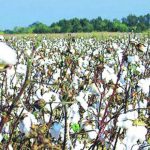 Sounds strange but this is what is being advised to spinners during these difficult and
Sounds strange but this is what is being advised to spinners during these difficult and
uncertain market conditions, worldwide. Spinners should sell yarn before they buy cotton. No doubt, the impact of temporary caution due to the global economic crisis in 2008 has slowly disappeared. But the world now faces a new crisis in which even developed nations with strong economies are also worried and feel directionless. All this due to the harsh fact that during the past few years the rules of global business have changed. The basic rules of demand and supply determining the price are no longer valid thanks to the speculative buying and selling in the commodity markets. Expectations, rather than the values of real production and consumption, determine the price. In recent years, papers – rather than actual commodities – have been traded physically. Brokers who have not seen any real cotton are the ones who determine the price.Due to the volatility of cotton prices, mills need to be prepared to temporarily shift to synthetic fibers when cotton is unavailable, or its price point is too high to be economically feasible. Successfull operation of business during economic instability requires collaboration with the suppliers as well as the customers and jointly developing solutions that work for the entire supply chain. At this junction, it is important to sit collectively, analyze the current scenario, and jointly consider various future strategies.
World consumption of cotton is expected to be about 109.8 million bales. Carryover stocks are forecast at 60.8 million bales, up 2.4 million bales from the January estimate. This represents a 14-million-bale increase above the previous year’s carryover 47 million bales. Global stocks-to-use ratio stands slightly above 55% and is sharply higher than the previous two years. According to the ITMF chief : “The global economy stands in such a fragile state that it is poised delicately balanced between a slow recovery or a second slide, which the experts bill as a double dip recession. Gaining a better understanding of each other’s challenges is a prerequisite to overcoming obstacles and paving the way for a successful future.”
It is believed that cotton is being significantly overproduced because of a lack of supply management methods at national, regional, and global scales. According to Oxfam, agricultural subsidies also distort the price of cotton by encouraging greater production and sales below the cost of production. In the last ten years just 265,000 US farmers have received over $31 billion in subsidies with 30% of these payments going to just 10 individual farms. If these subsidies were eliminated, Oxfam estimate that the price African cotton producers would receive would rise by 12%. However, the elimination of subsidies alone will not ensure better and more table prices on the world market without overproduction being addressed. Another significant factor in the long term cotton price decline is the growth in competition from synthetic fibres.





